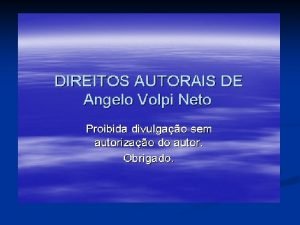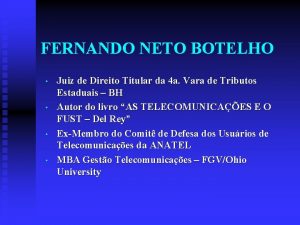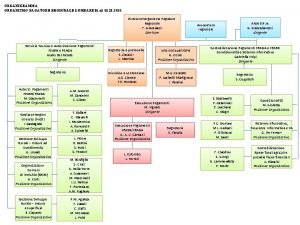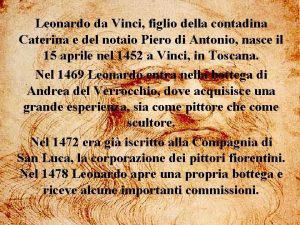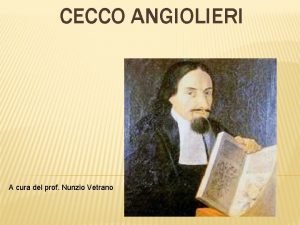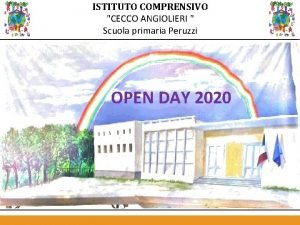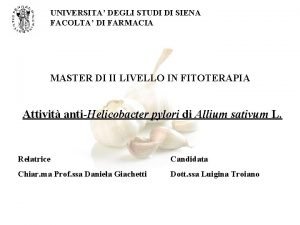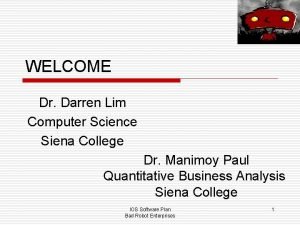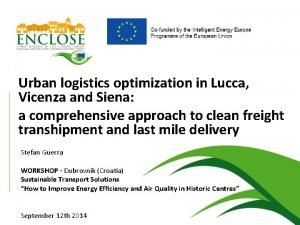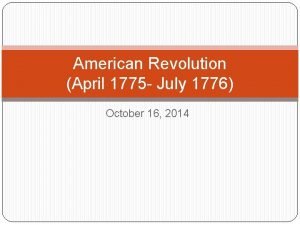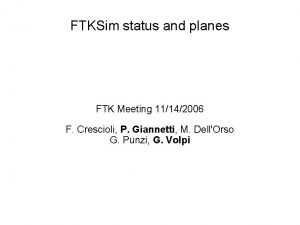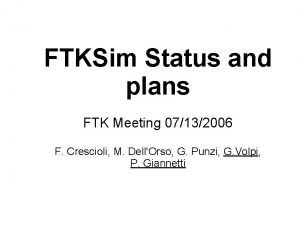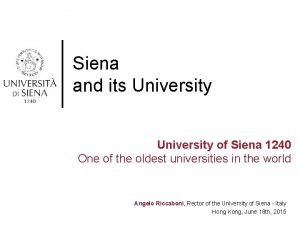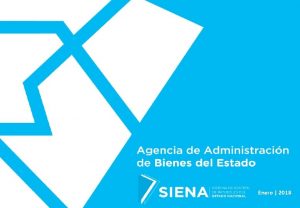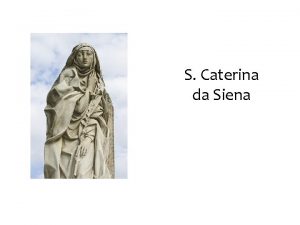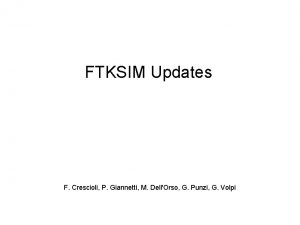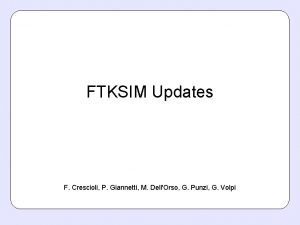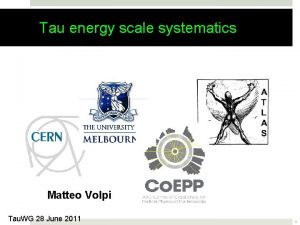Status FTKSIM July 20 2005 G Volpi Siena

















- Slides: 17

Status FTKSIM July 20, 2005 G. Volpi (Siena) for: F. Crescioli, M. Dell'Orso, G. Punzi, C. Roda, G. Usai, I. Vivarelli, G. Volpi.

Code organization In progress Existing (SVT) Red: basic performance parameters than can be brought inside ATLFAST

Status FTKSIM ● ● Now we have approximately 1300 K events of single muon track monochromatic in Pt (at 6, 8, 10, 20, 40 Ge. V/c) Event digitization without noise and secondary propagation off. Sufficient statistic to divide barrel in sectors (R-phi plane), geometrical constants and patterns for each sector. Test some performance of linear fit vs ATLAS full offline reconstruction, using Space Points (SP).

Sectors ● ● ● Barrel divided in 355 sectors in tranverse plane. Each sector consists of a combination 6 silicon module, 1 silicon module per layer. sub-sample of 350 k tracks of mu+ and mu-, Pt = 6, 8, 10, 20 , 40, to generate linear constants. Usable for geometrical generation: 289 k tracks Linear constants for 348 sectors (all but the lowest populated ones)


Performance on tracks ● ● We have determined linearized fit constants (. fcon for CDF people) for transverse track parameters 1/Pt, phi and impact parameter. We made a comparison of ATLAS reconstruction (R) and linearized fit (F)

Curvature reconstruction FTKSIM evaluates curvature correctly, with a resolution only slightly worse than ATLAS reconstruction algorithm (i. Pat. Rec)



Same small biases are present both in offline reconstruction and ftksim UNDER INVESTIGATION

Curvature reconstruction show a small non-linearity ●Resolution on 1/Pt vs 1/Pt is worse than i. Pat. Rec by nearly constant offset ● i. Pat. Rec shows a bias on reconstruction of Pt.

Phi reconstruction FTK reconstructs phi of tracks with same precision of ATLAS algorithm

FTKSIM reproduces also a strange periodic pattern in phi difference vs global phi. i. Patrec

Impact parameter fit Impact parameter reconstructed by FTKSIM appears to be better than Off-line. Not an actual performance because FTK in this case forces fits to have <d>=0 mm, while ATLAS reconstruction don't: Impact parameter currently underestimated

Summary and next steps ● ● We have successfully determined linearized constants for measuring phi and Pt in silicon tracker. We still need to improve a few things. However, our first priority now is to produce and distribute a first release of a package that anybody can use to start physics studies with FTKSIM

Detailed physics studies

Parallel work, of lower priority ● ● ● Start studies on use of the 2 nd local coordinate z, to extract z 0 and cot(theta) parameters. We need a sample of single tracks coming from a larger beam spot, in order to fit impact parameter correctly. We need a continuous Pt spectrum, rather than discrete values in order to produce realistic patterns. – ● The above two things probably cannot be done with current samples, and we have to make the effort of generating it ourselves. Try to get better linarity in 1/Pt with a higher granularity of sectors.
 Giulio volpi
Giulio volpi Cartorio volpi
Cartorio volpi Angelo volpi neto
Angelo volpi neto Giulio del monte regione lombardia
Giulio del monte regione lombardia Leonardo da vinci figlio di caterina
Leonardo da vinci figlio di caterina Biografia cecco angiolieri
Biografia cecco angiolieri Virgen del voto siena
Virgen del voto siena Istituto comprensivo cecco angiolieri siena
Istituto comprensivo cecco angiolieri siena Facoltà di farmacia siena
Facoltà di farmacia siena Cecco angiolieri padre
Cecco angiolieri padre Siena college computer science
Siena college computer science St annes high school for girls
St annes high school for girls Siena freight factoring
Siena freight factoring July 16 1776
July 16 1776 The hot july sun beat relentlessly down
The hot july sun beat relentlessly down Ctdssmap payment schedule july 2021
Ctdssmap payment schedule july 2021 Monday 13th july
Monday 13th july July 30 2009 nasa
July 30 2009 nasa

